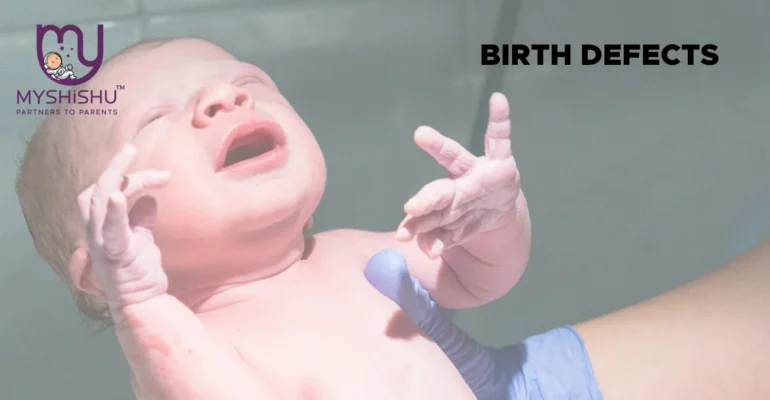Birth Defects: Defying The Odds
Birth Defects: Defying The Odds
Introduction
Birth defects, a phrase laden with complexity and nuance, represent a realm where the intricate dance of genetics and environment unfolds. In this exploration, we unravel the tapestry of birth defects—those unique challenges that touch the lives of families globally. “Birth defects,” a term echoing the delicate interplay of nature and nurture, introduces us to a landscape where structural and functional variations shape the beginning of life. Join us on this enlightening journey as we dissect the causes, unveil the impact, and illuminate the path toward prevention. Understanding birth defects is not just a matter of medical insight; it’s a narrative of resilience, compassion, and the pursuit of a healthier future.
Defining birth defects
At its core, a birth defect is a departure from the norm, a deviation in the intricate dance of development that occurs in the womb. These deviations can manifest as structural or functional anomalies present at birth, casting a unique silhouette on the canvas of human life.
Structural defects encompass a wide spectrum, from subtle malformations to more conspicuous issues like cleft palates or heart malformations. On the other hand, metabolic disorders involve glitches in the body’s ability to process specific substances, introducing challenges that can affect overall health.
Beyond these, chromosomal abnormalities add another layer of complexity, involving variations in the number or structure of chromosomes, potentially altering the course of biological destiny. Together, these anomalies create the tapestry of what we collectively term “birth defects.” Understanding their nuances is the first step in navigating this intricate landscape.
Exploring the Tapestry of Congenital Anomalies
Within the vast spectrum of birth defects, congenital anomalies unfold as a captivating chapter, each type weaving its unique narrative into the fabric of life. Let’s unravel the tapestry and delve into the diverse types of congenital anomalies that shape the trajectory of prenatal development.
- Structural Anomalies: Structural congenital anomalies involve irregularities in the formation of organs or body parts. Conditions such as heart defects, cleft lip or palate, and limb abnormalities fall under this category. These anomalies showcase the delicate orchestration required for the proper development of physical structures.
- Chromosomal Aberrations: Chromosomal anomalies disrupt the normal number or structure of chromosomes. Notable examples include Down syndrome, where an extra copy of chromosome 21 is present, leading to distinct physical features and potential cognitive challenges. Understanding these chromosomal variations provides insights into the genetic underpinnings of congenital anomalies.
- Metabolic Disorders: Congenital metabolic disorders affect the body’s ability to process specific substances. Phenylketonuria (PKU) is one such example, where the body cannot break down the amino acid phenylalanine, potentially leading to intellectual disabilities if left untreated. Managing these disorders often involves specialized diets and medical interventions.
- Neural Tube Defects: Anomalies in the development of the neural tube can result in conditions like spina bifida, where the spinal cord doesn’t form properly. These defects can impact motor function and may require surgical interventions to address physical complications.
- Developmental Delays: Some congenital anomalies may manifest as developmental delays, affecting milestones such as speech, motor skills, or cognitive abilities. Early intervention and therapeutic support play crucial roles in mitigating the impact of these delays.
Understanding the diverse types of congenital anomalies is a key step in fostering awareness, facilitating early detection, and advancing interventions that enhance the quality of life for individuals affected by these conditions. Each anomaly tells a unique story, and through knowledge and compassion, we strive to ensure that every narrative is one of resilience and support.
Deciphering the Origins: Causes of Birth Defects
Understanding the intricate tapestry of birth defects requires a deep dive into the factors that shape the course of prenatal development. The causes of these anomalies are multifaceted, often involving a complex interplay of genetic and environmental influences.
- Genetic Factors: Genetic predisposition is a significant contributor to many birth defects. Inherited conditions, such as cystic fibrosis, sickle cell anemia, or muscular dystrophy, highlight the influence of abnormal genes passed down through generations. Genetic counseling becomes a valuable resource for families navigating potential genetic complexities.
- Environmental Exposures: Prenatal exposure to certain substances can significantly impact fetal development. Teratogens, substances that cause birth defects, include drugs, alcohol, and tobacco. Exposure to these during pregnancy can heighten the risk of anomalies. Therefore, maintaining a healthy lifestyle and avoiding harmful substances is crucial for expectant mothers.
- Combination of Genetic and Environmental Factors: In many instances, birth defects result from the intricate dance between genetic predisposition and environmental exposures. The combination of these factors amplifies the complexity of predicting and preventing anomalies. Nonetheless, awareness and proactive measures can substantially reduce overall risk.
- Maternal Health: The health of the expectant mother plays a pivotal role in prenatal development. Conditions such as diabetes, obesity, or infections during pregnancy can increase the likelihood of birth defects. Regular prenatal care, including screenings and check-ups, becomes essential for monitoring maternal and fetal well-being.
- Advanced Maternal Age: While age alone is not a direct cause, advanced maternal age is associated with a higher risk of certain chromosomal abnormalities, such as Down syndrome. This emphasizes the importance of comprehensive prenatal care and genetic counseling for expectant mothers.
- Nutritional Deficiencies: Adequate nutrition is critical for fetal development. Deficiencies in essential nutrients like folic acid, iron, and iodine can contribute to birth defects. Preconception planning that includes a well-balanced diet and appropriate supplements is key to addressing nutritional needs.
Understanding the causes of birth defects empowers individuals and families to make informed decisions during preconception planning and pregnancy. It also underscores the importance of ongoing research and awareness initiatives to further unravel the complexities surrounding these anomalies. Through collective knowledge and action, we strive to create a world where the impact of birth defects is minimized and every child has the opportunity for a healthy start in life.

Navigating Risks: Factors that Can Harm Your Baby
Ensuring a healthy pregnancy involves steering clear of potential risks that could impact your baby’s development. Here are key factors to be mindful of:
- Smoking and Alcohol: Smoking and alcohol consumption during pregnancy can lead to birth defects and developmental issues. Quitting these habits before conception reduces the risks.
- Illicit Drugs: Substance abuse, including illicit drugs, poses severe risks to fetal development. Seek support to overcome addiction before planning for a family.
- Infections: Certain infections, such as rubella and toxoplasmosis, can harm the developing fetus. Ensure vaccinations are up-to-date, and practice good hygiene.
- Environmental Toxins: Exposure to harmful chemicals or pollutants can increase the risk of birth defects. Minimize exposure at home and work, opting for eco-friendly alternatives.
- Certain Medications: Some medications can pose risks during pregnancy. Consult with your healthcare provider to assess the safety of any prescribed or over-the-counter drugs.
- Stress: Chronic stress may contribute to preterm birth and developmental issues. Prioritize self-care and stress management techniques.
- Poor Nutrition: Inadequate nutrition can impact fetal development. Ensure a well-balanced diet with essential nutrients, and consider prenatal supplements.
- Unmanaged Chronic Conditions: Conditions like diabetes and hypertension, if unmanaged, can increase the risk of birth defects. Regular medical check-ups and adherence to treatment plans are crucial.
By being proactive and adopting a healthy lifestyle, you pave the way for a safer and more supportive environment for your baby’s growth and development.
Unveiling the Unseen: Diagnosis of Birth Defects During Pregnancy
The journey toward understanding and addressing birth defects begins with comprehensive prenatal care. Various diagnostic tools empower healthcare professionals to detect potential issues early on, allowing for timely interventions and support.
- Ultrasound Imaging: Ultrasound remains a cornerstone in prenatal diagnostics, offering detailed images of the developing fetus. It helps identify structural abnormalities, monitor growth, and assess the overall health of the baby.
- Blood Tests: Maternal blood tests, including the quad screen or triple screen, assess markers that may indicate the presence of certain birth defects. These tests provide valuable insights into the baby’s health and can guide further diagnostic steps.
- Amniocentesis: In cases where additional information is needed, amniocentesis may be recommended. This procedure involves extracting a small sample of amniotic fluid, allowing for genetic analysis to identify chromosomal abnormalities.
- Chorionic Villus Sampling (CVS): Similar to amniocentesis, CVS involves collecting a small tissue sample from the placenta for genetic testing. This procedure is typically performed earlier in pregnancy.
- Non-Invasive Prenatal Testing (NIPT): NIPT is a relatively recent advancement that analyzes cell-free DNA in the maternal blood to screen for chromosomal abnormalities. While it doesn’t provide a definitive diagnosis, it offers valuable insights without the invasiveness of procedures like amniocentesis.
- Fetal MRI: In cases where ultrasound results are inconclusive, a fetal MRI may be recommended to provide more detailed images of the developing fetus. This can be particularly useful in assessing certain structural anomalies.
- Echocardiography: Specialized ultrasound, known as fetal echocardiography, focuses on the baby’s heart. It helps identify congenital heart defects and provides crucial information for planning medical interventions if necessary.
An early and accurate diagnosis enables expectant parents and healthcare providers to make informed decisions regarding the baby’s care. It also allows for the development of tailored support plans, fostering a proactive approach to managing potential challenges associated with birth defects.
Reducing the Risk: A Proactive Approach to Congenital Anomalies
While not all congenital anomalies can be prevented, there are proactive steps individuals and families can take to minimize the risk. By adopting a holistic approach that encompasses preconception planning, healthy lifestyle choices, and early prenatal care, the journey toward reducing the impact of congenital anomalies begins.
- Preconception Planning: Begin the journey towards a healthy pregnancy by focusing on preconception planning. This includes maintaining a healthy weight, managing chronic conditions, and undergoing genetic counseling to assess potential risks based on family history.
- Prenatal Care: Early and comprehensive prenatal care is paramount. Regular check-ups, ultrasounds, and screenings provide vital insights into the baby’s development, allowing for early detection and intervention if needed.
- Healthy Lifestyle Choices: A well-balanced diet rich in essential nutrients is fundamental for fetal development. Expectant mothers should also avoid harmful substances such as tobacco, alcohol, and illicit drugs. Engaging in regular, moderate exercise under the guidance of healthcare professionals contributes to overall well-being.
- Environmental Awareness: Minimize exposure to environmental hazards that could pose risks to fetal development. This includes avoiding certain medications, chemicals, and infections. Creating a safe and supportive environment is crucial for a healthy pregnancy.
- Genetic Counseling: For families with a history of congenital anomalies or genetic conditions, genetic counseling is invaluable. It provides insights into potential risks, allowing for informed family planning decisions and proactive measures.
- Educational Resources: Access reliable educational resources to stay informed about the various aspects of prenatal care. Awareness and knowledge empower expectant parents to make informed decisions throughout the pregnancy journey.
- Support Systems: Cultivate a strong support system that includes healthcare professionals, family, and friends. Emotional well-being is a crucial component of a healthy pregnancy, and having a robust support network can significantly impact the overall experience.
By embracing these proactive measures, individuals can contribute to creating a supportive environment for a healthy pregnancy. While not every congenital anomaly can be prevented, the collective efforts of individuals, healthcare professionals, and communities can pave the way for a future where the impact of these anomalies is minimized and every child has the opportunity to thrive.
The Road to Prevention: Nurturing a Healthy Pregnancy
Preventing congenital anomalies begins with a commitment to proactive measures that foster a nurturing environment for fetal development. By integrating informed choices, comprehensive healthcare, and supportive lifestyle adjustments, individuals can significantly reduce the risk of congenital anomalies.
- Preconception Health: Lay the foundation for a healthy pregnancy by prioritizing preconception health. This involves maintaining an optimal weight, managing chronic conditions, and seeking genetic counseling to understand potential risks.
- Nutrient-Rich Diet: A well-balanced and nutrient-rich diet is pivotal. Essential vitamins and minerals, particularly folic acid, play a crucial role in preventing neural tube defects. Incorporate a variety of fruits, vegetables, and whole grains into your daily meals.
- Regular Exercise: Engage in regular, moderate exercise as part of a healthy lifestyle. Consult with healthcare professionals to determine safe and suitable activities, promoting overall well-being for both the mother and the developing fetus.
- Avoiding Harmful Substances: Steer clear of harmful substances such as tobacco, alcohol, and illicit drugs. Even minimal exposure to these substances during pregnancy can pose significant risks to fetal development.
- Early and Regular Prenatal Care: Initiate prenatal care early in the pregnancy journey. Regular check-ups, ultrasounds, and screenings provide crucial insights, allowing for early detection and timely intervention if anomalies are identified.
- Genetic Screening and Counseling: For families with a history of genetic conditions, consider genetic screening and counseling. Understanding potential risks allows for informed family planning decisions and the implementation of preventive measures.
- Environmental Consciousness: Be mindful of environmental exposures. Minimize exposure to harmful chemicals and pollutants, both at home and in the workplace. Creating a safe and supportive environment is instrumental in preventing potential risks.
- Stress Management: Prioritize stress management techniques to create a positive and supportive emotional environment. Chronic stress during pregnancy can impact both maternal and fetal well-being.
- Educational Resources: Stay informed by accessing reputable educational resources. Knowledge empowers individuals to make informed decisions, fostering a proactive approach to preventing congenital anomalies.
- Community Support: Cultivate a supportive community that includes healthcare professionals, family, and friends. Shared experiences and guidance can enhance the journey towards a healthy pregnancy.
By embracing these preventative measures, individuals contribute to creating an environment that supports the optimal development of the fetus and minimizes the risk of congenital anomalies. The commitment to a healthy pregnancy extends beyond individual choices, creating a collective effort toward ensuring the well-being of future generations.
Seeking Guidance: When to Consult Your Healthcare Provider
Promptly consult your healthcare provider if you observe any concerning signs during pregnancy, such as unusual pain, bleeding, or changes in fetal movement. Regular prenatal check-ups are essential, and any unexpected symptoms warrant professional attention. Your healthcare team is your ally in ensuring a healthy and well-monitored pregnancy.
FAQs Related To Pregnancy Birth Defects
-
What are the common types of birth defects during pregnancy?
Birth defects can manifest as structural issues (e.g., heart or limb malformations), metabolic disorders (e.g., phenylketonuria), or chromosomal abnormalities (e.g., Down syndrome).
-
How can I reduce the risk of birth defects while pregnant?
Reduce risks by maintaining a healthy lifestyle, avoiding harmful substances, ensuring proper prenatal care, and seeking genetic counseling for families with a history of birth defects.
-
When should I seek medical advice if I suspect a birth defect?
Promptly consult your healthcare provider if you notice any unusual symptoms, experience pain or bleeding, or observe changes in fetal movement during pregnancy.
-
Are there specific genetic factors that contribute to birth defects?
Yes, certain genetic conditions, passed down through families, can contribute to birth defects. Genetic counseling helps assess risks and make informed family planning decisions.
-
What prenatal tests can help detect or rule out potential birth defects?
Prenatal tests include ultrasound imaging, blood tests, amniocentesis, chorionic villus sampling (CVS), non-invasive prenatal testing (NIPT), fetal MRI, and echocardiography, providing insights into fetal health and potential anomalies.
Conclusion
In unraveling the complexities of birth defects, we’ve explored causes, prevention, and the power of early diagnosis. By embracing proactive measures, fostering awareness, and seeking timely healthcare, we pave the way for healthier pregnancies. Together, let’s build a future where the impact of congenital anomalies is minimized and every child enters the world with the promise of a thriving start.










